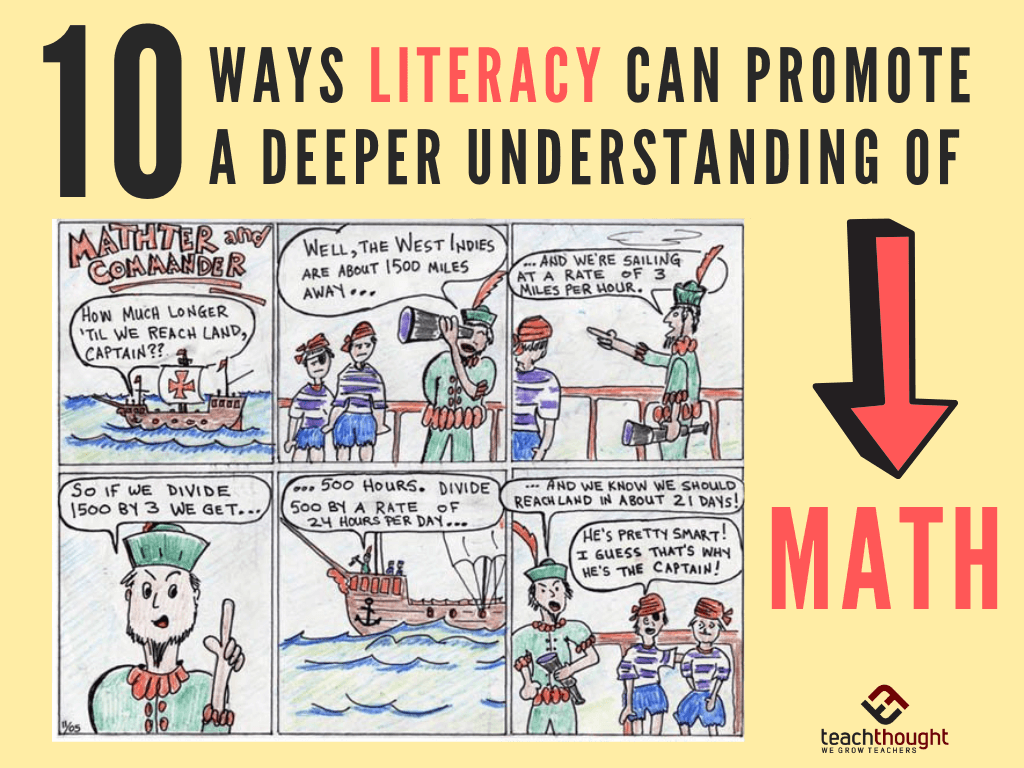
How Can Literacy Promote A Deeper Understanding Of Math?
contributed by Linda Kardamis, Teach4TheHeart.com
With the rise of new trends such as a flipped classroom and whole brain teaching, there is an emphasis on getting students more actively involved in learning in the classroom. And whether or not you choose to fully embrace either of these methods, we can all agree that we want students participating as much as possible.
When students are actively participating, they are learning. In math classes, we typically involve students in the problem-solving side, but we don’t often expect them to provide explanations.
When students have to write an explanation or explain their problem to someone else, they develop a deeper understanding of the concept. Or, if there are any misconceptions, they are discovered and can be easily corrected.
As a middle school math teacher, I loved incorporating writing and speaking into my classroom. I found that requiring my students to provide verbal or written explanations not only helped their understanding but also made class a lot more interesting and fun.
Here are ten ways literacy can promote a deeper understanding of math.
10 Strategies For Connecting Literacy And Math
1. Have students present problems to the class. When it comes time to go over homework or classwork, choose students to present their work on the board. Each student does only one problem, and they write their work as well as their answer to the class. Then, the students take turns telling the class how they solved their problem. If anyone has a question, you can choose to answer it yourself or defer it to the presenting student to answer.
2. Ask students to write down how they solved a problem. After students solve a problem, ask them to write down how they solved it. Teach them how to give a great explanation. One of the best ways literacy can promote a deeper understanding of math involves writing out step-by-step instructions, how the steps apply to the problem, and the why behind them.
3. Ask students to explain (in writing or verbally) a mistake they made. After going over a set of problems, ask the students to take one problem they missed and explain why they missed it. The explanation should include what they did wrong as well as what they should’ve done instead.
4. Have students create quizzes for each other. Start by asking the students to write a quiz (and answer key) over the topic you are covering. You can be specific about what types of questions you want or leave it more open. Once the students have written a quiz, they exchange them with a partner and take each other’s quiz. Then, they grade each other’s’ quizzes and discuss any mistakes that were made.
5. Have students write down how they would explain this concept to a friend. Give students 5-10 minutes to write down what they would say if their friend asked them for help.
6. Have students tell each other how they solved a problem. Give students a couple of minutes to explain to a partner how they solved a problem. The partner can then ask questions or give feedback on the explanation.
7. Use exit slips. (Here are some tools for exit slips). As outlined in Content-Area Writing, exit slips are a great way to measuring understanding at the end of class. Students write an answer to a question and turn it in on their way out the door. You can ask a specific content question such as, “Why do you need a common denominator when adding fractions?” Or, you can ask a reflective question such as “What questions do you have about today’s lesson?” or “What do you need to do to prepare for our upcoming test?”
8. Require students to take notes. Have your students write down formulas, key concepts, and the steps used to solve each type of problem in a math notebook. Not only will writing this down help them concentrate better, but it will also produce a great resource for them to use later when they can’t remember how to solve a problem.
9. Allow students to ask each other for help solving problems. While you probably don’t want to do this all the time as the conversations can quickly digress, allowing students to discuss math problems serves a dual purpose. Not only does it allow more questions to be answered than you have time to answer yourself, but it also helps the student who’s giving the explanation to develop a deeper understanding.
10. Moderate written discussions either online or in the classroom. If you’re able to, use a class website, Facebook page, or Twitter to ask interesting questions and spark discussion among your students. Even if you don’t have this capability, you can post a question on a poster board in your room and allow students to comment below.
What are some other ways literacy can promote a deeper understanding of math in your classroom?
Image attribution flickr user puuikibeach